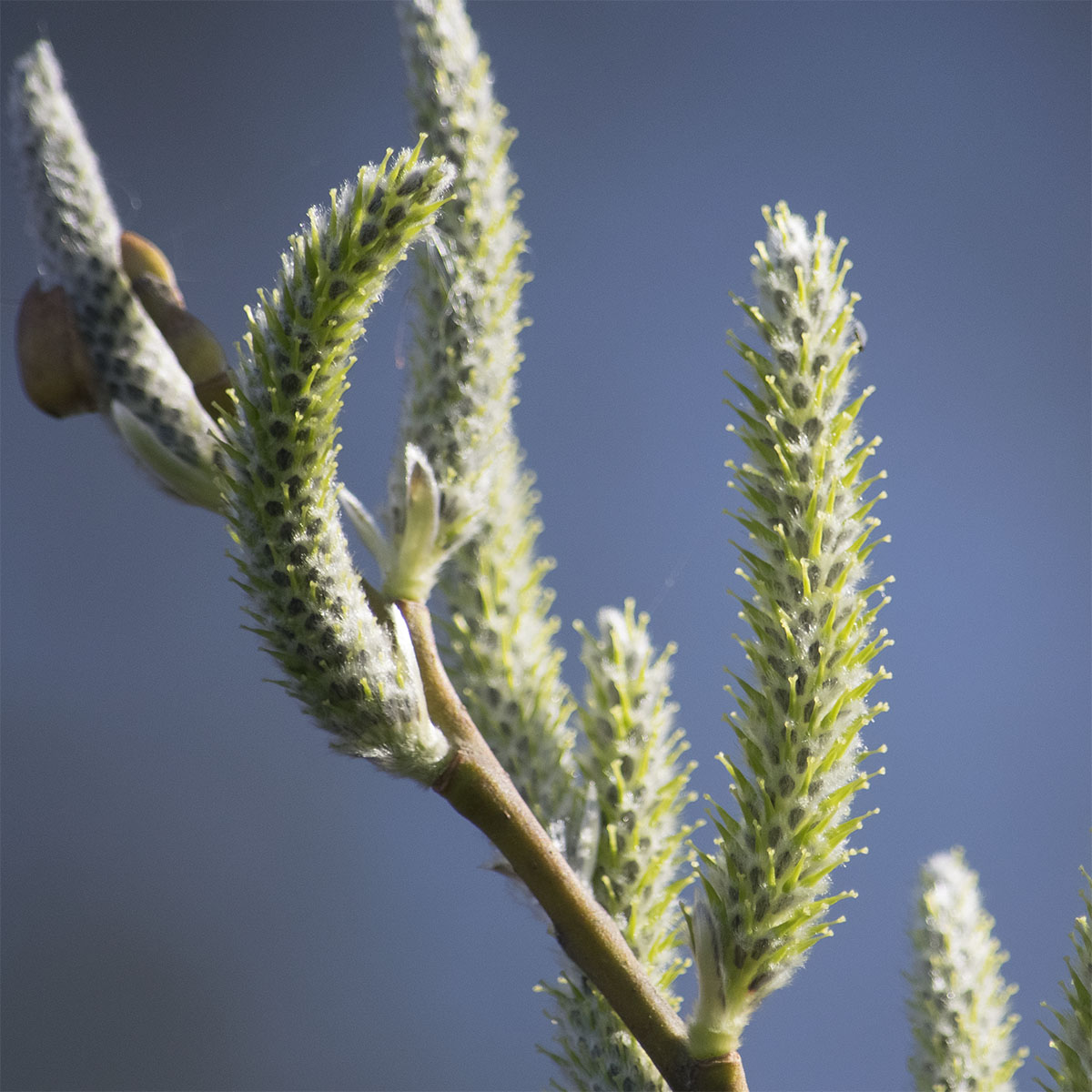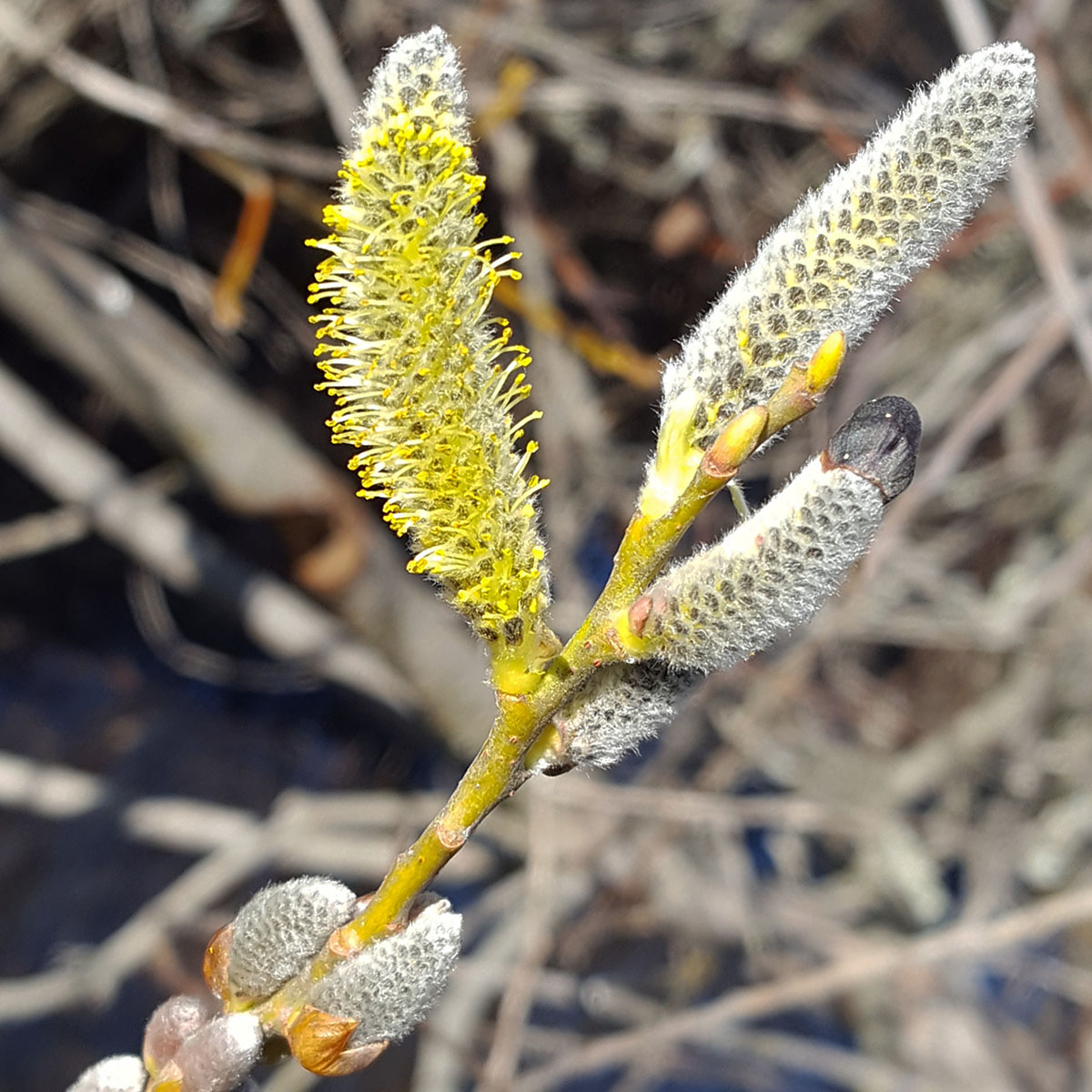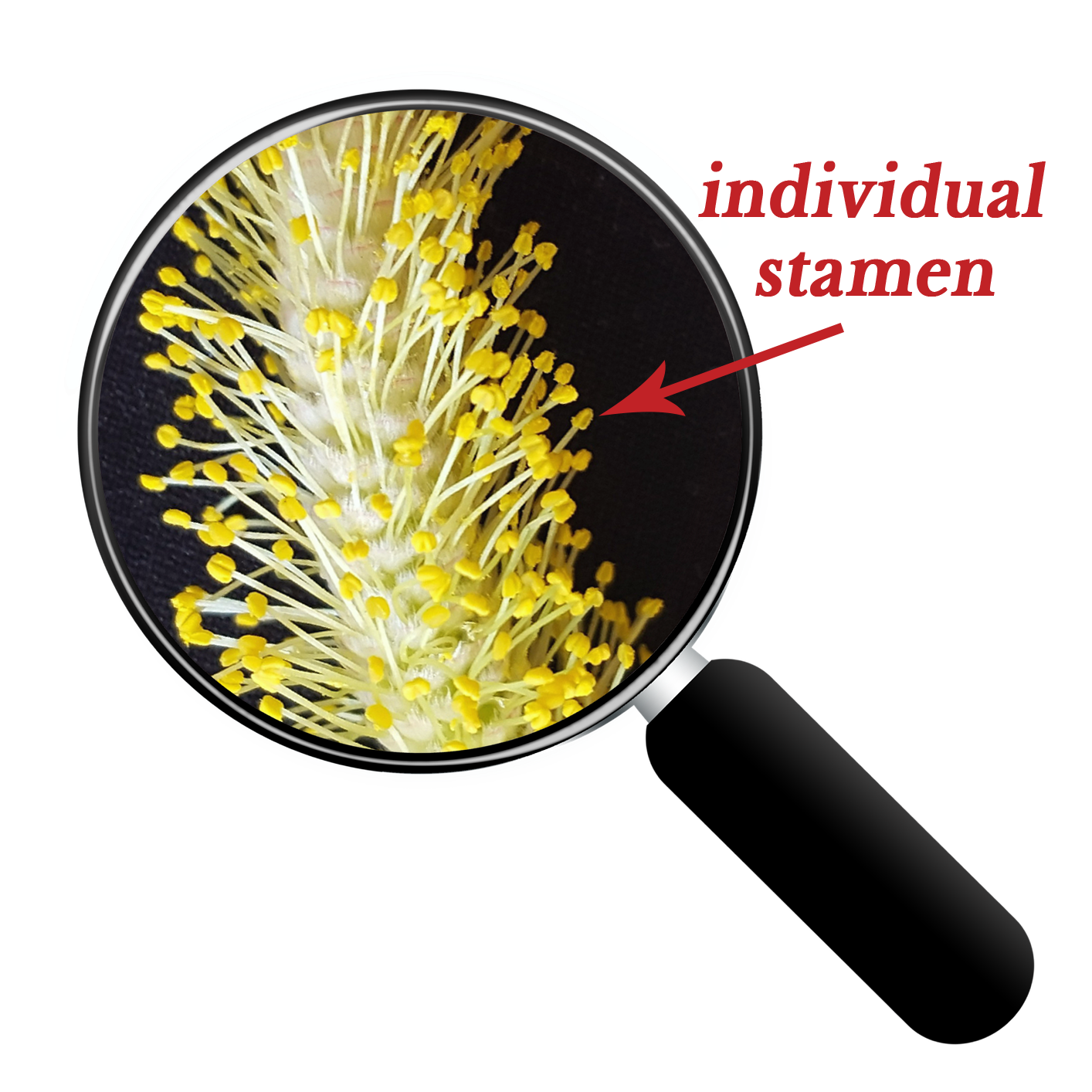Salix Species – Willows of the Wetlands
Willows are the backbone of the wetlands. They are the last of the deciduous plants to drop their leaves and the first to bloom before winter changes into spring. At our elevation these woody plants take the form of shrubs or trees. They like to have their “feet” in water besides creeks and their roots form underground networks which hold the soil, preventing it from washing away downstream. For this reason, they are often called soil-bioengineers.
Willows are also a keystone plant species in our native California wetlands ecosystems (see more on this in a future article). Along with helping form structure and shading the waterway, they provide food and habitat for numerous insects which serve as food for birds and other species. Other animals such as beaver also rely on their leaves and branches as a food source.
Willows are fast growing and quick to regenerate when branches break in high water flow or are chewed upon by other animals such as beaver. Broken branches will quickly develop roots. In restoration projects they are often planted along waterways to stabilize the bank areas from erosion that can occur during heavy stormwater flow.
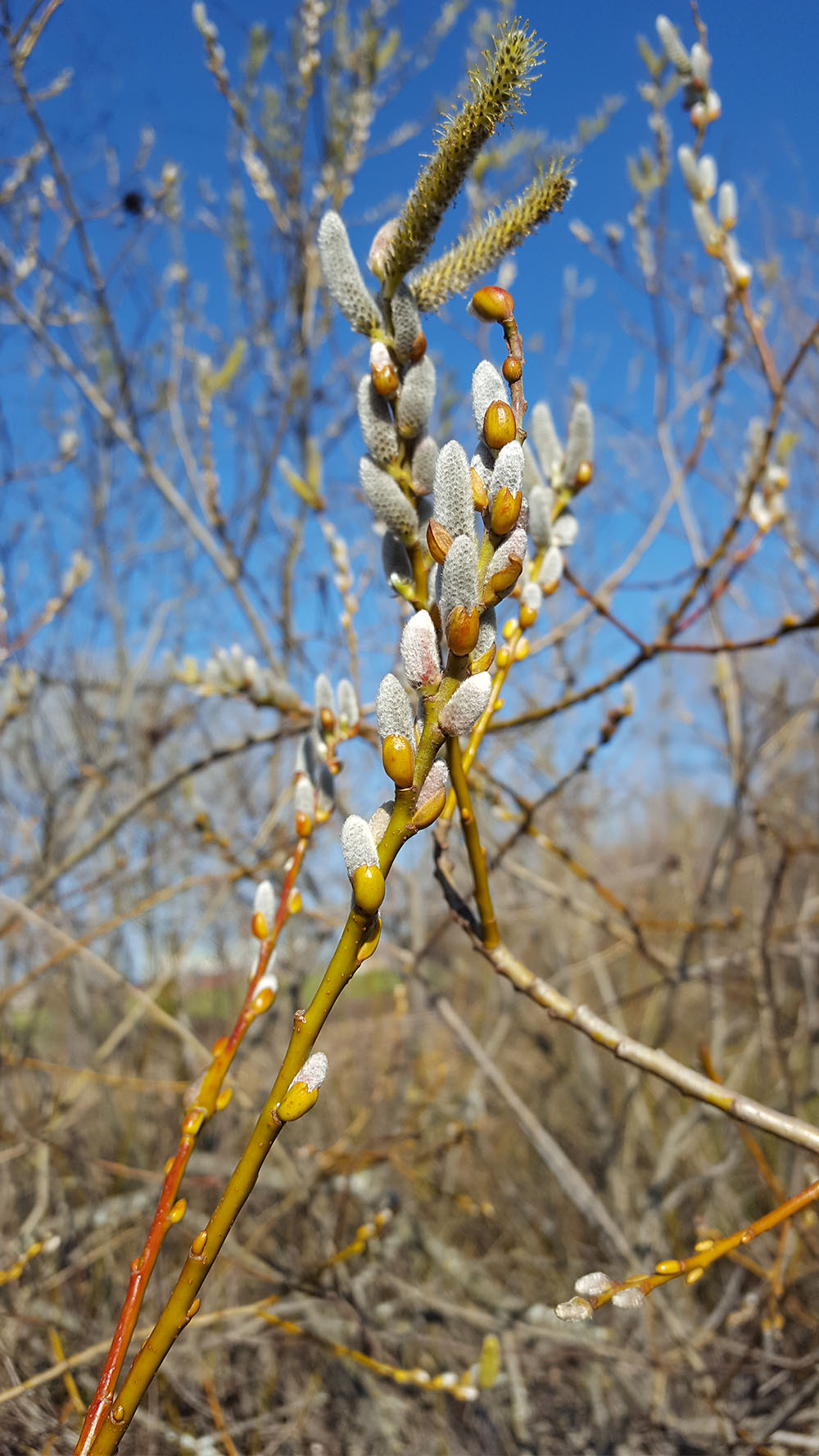
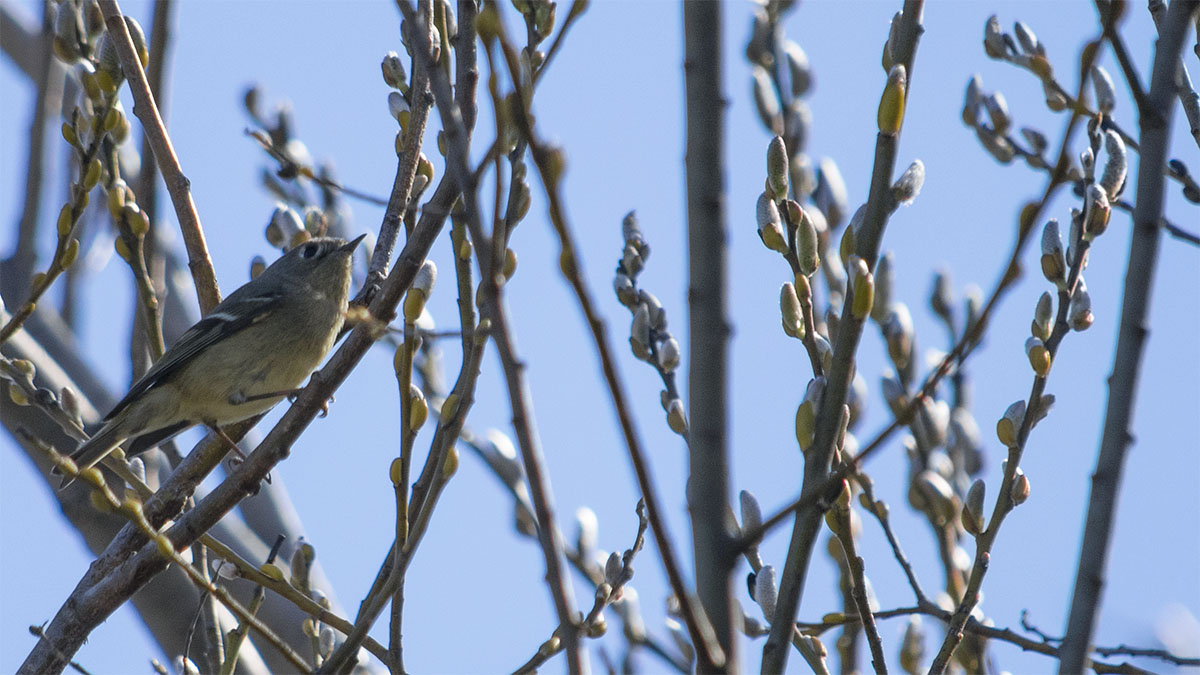
What Are Catkins?
Catkins contain the flower parts that will eventually produce seeds. They are composed of a cluster of many flowers within a cylindrical spike. These flower parts emerge from buds along the willow branch & early on they have a fine fur on their surface, resembling the furry tail-tips of a cat (the word catkin comes from the Middle Dutch word “katteken” = kitten). Willows are not the only trees that have catkins as their flower parts. A few others that can be found near wetlands are oaks, poplars, and alders. It is thought that catkin flower anatomy independently arose at least twice in the evolution of plants (an example of convergent evolution).
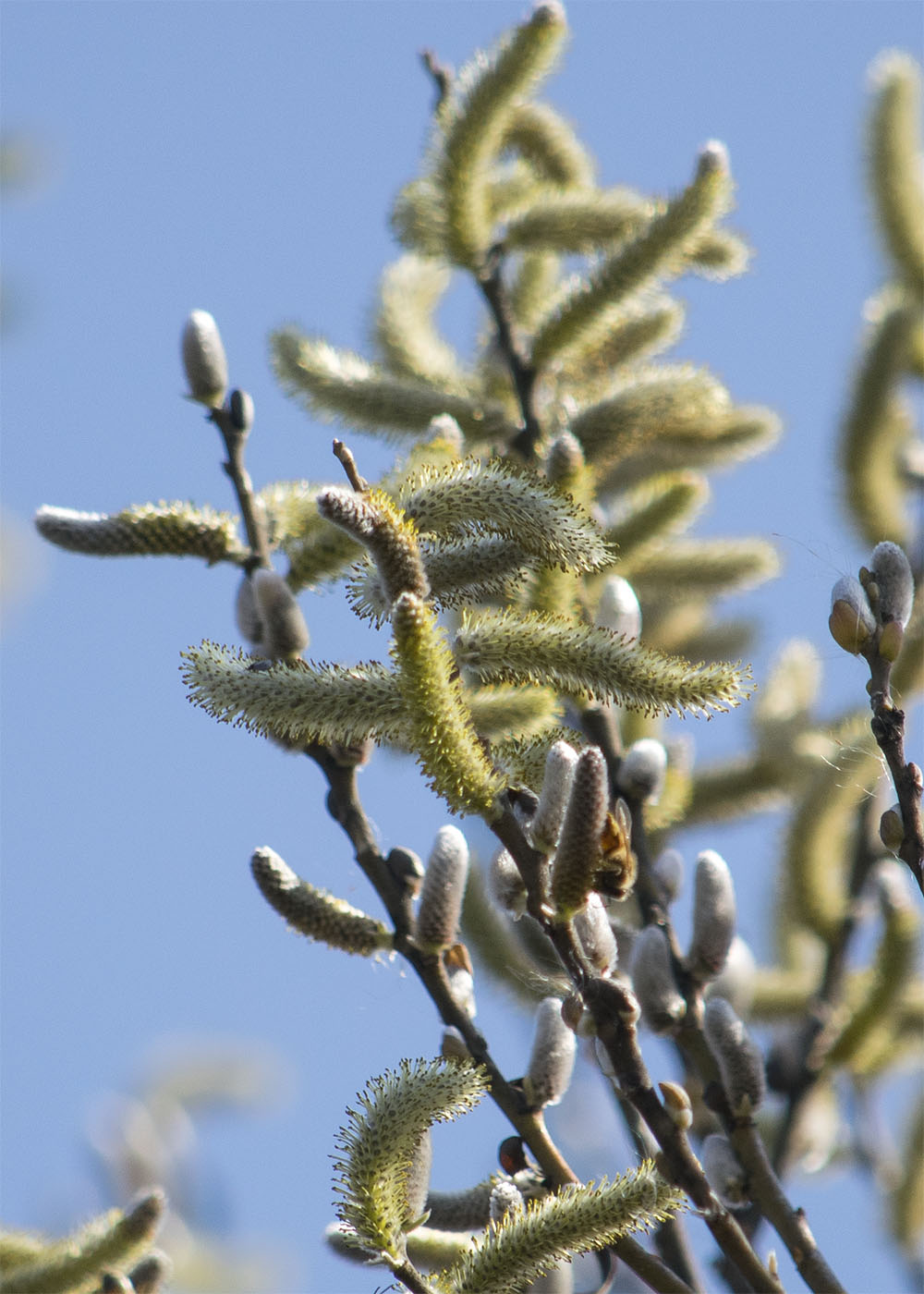
What Are Catkins?
Catkins contain the flower parts that will eventually produce seeds. They are composed of a cluster of many flowers within a cylindrical spike. These flower parts emerge from buds along the willow branch & early on they have a fine fur on their surface, resembling the furry tail-tips of a cat (the word catkin comes from the Middle Dutch word “katteken” = kitten). Willows are not the only trees that have catkins as their flower parts. A few others that can be found near wetlands are oaks, poplars, and alders. It is thought that catkin flower anatomy independently arose at least twice in the evolution of plants (an example of convergent evolution).
WILLOW CATKIN TYPES
(female vs male)
Willows, or plants in the Salix Family, are DIOECIOUS (pronounced – “dy-ee-shuhs“) meaning that an individual willow plant will produce flowers parts in catkins of only one sex.
Many species of plants that have catkins rely on the wind for pollination, but willows need insect pollinators like bees to do the job.
(catkin example pics were taken in MonteVerde Wetlands area)
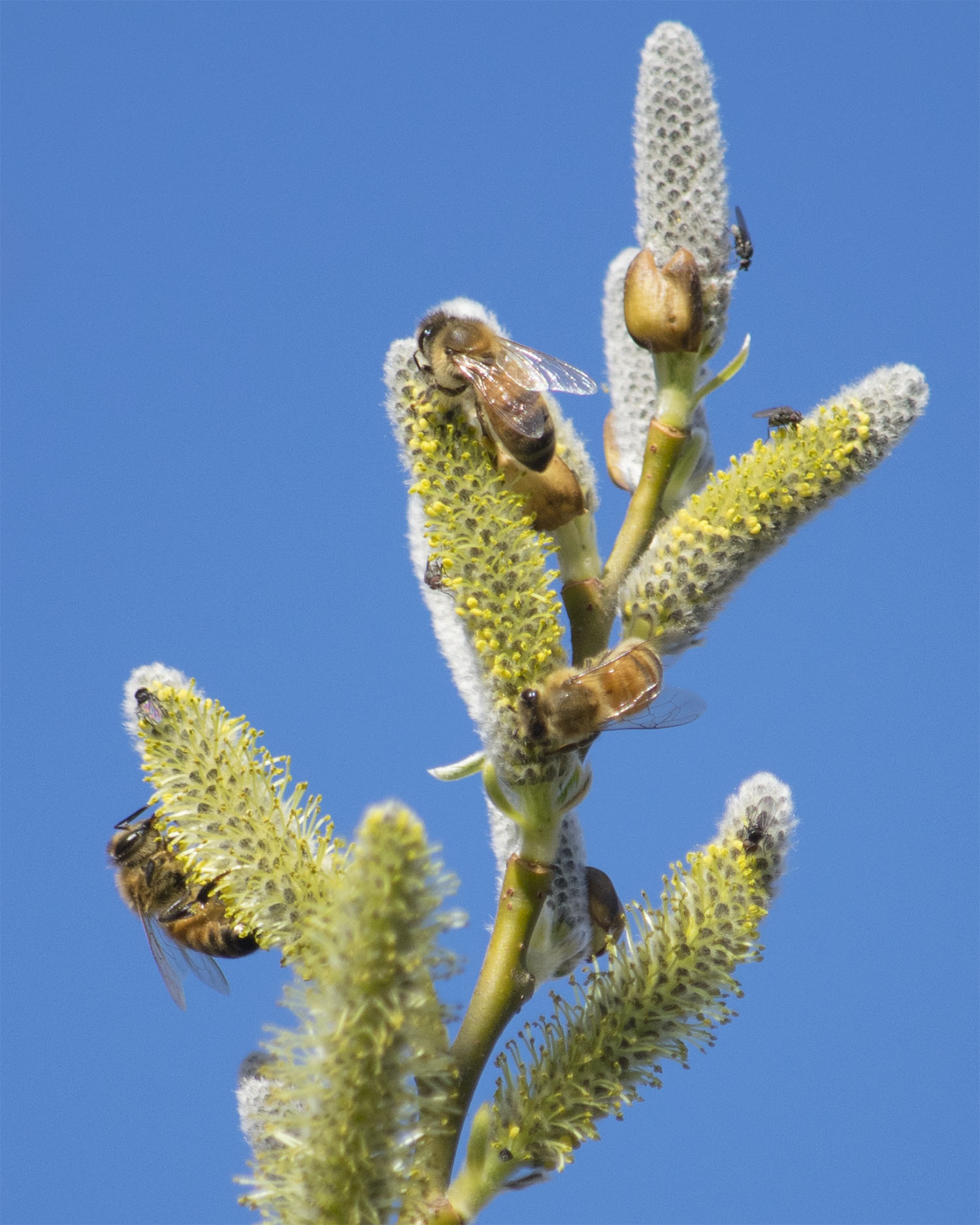
Willows provide Nectar in Winter
The earliest insect pollinators of the season rely on nectar and pollen that comes from willow catkins. Along with the bees, small flies are also utilizing this resource in the photo.
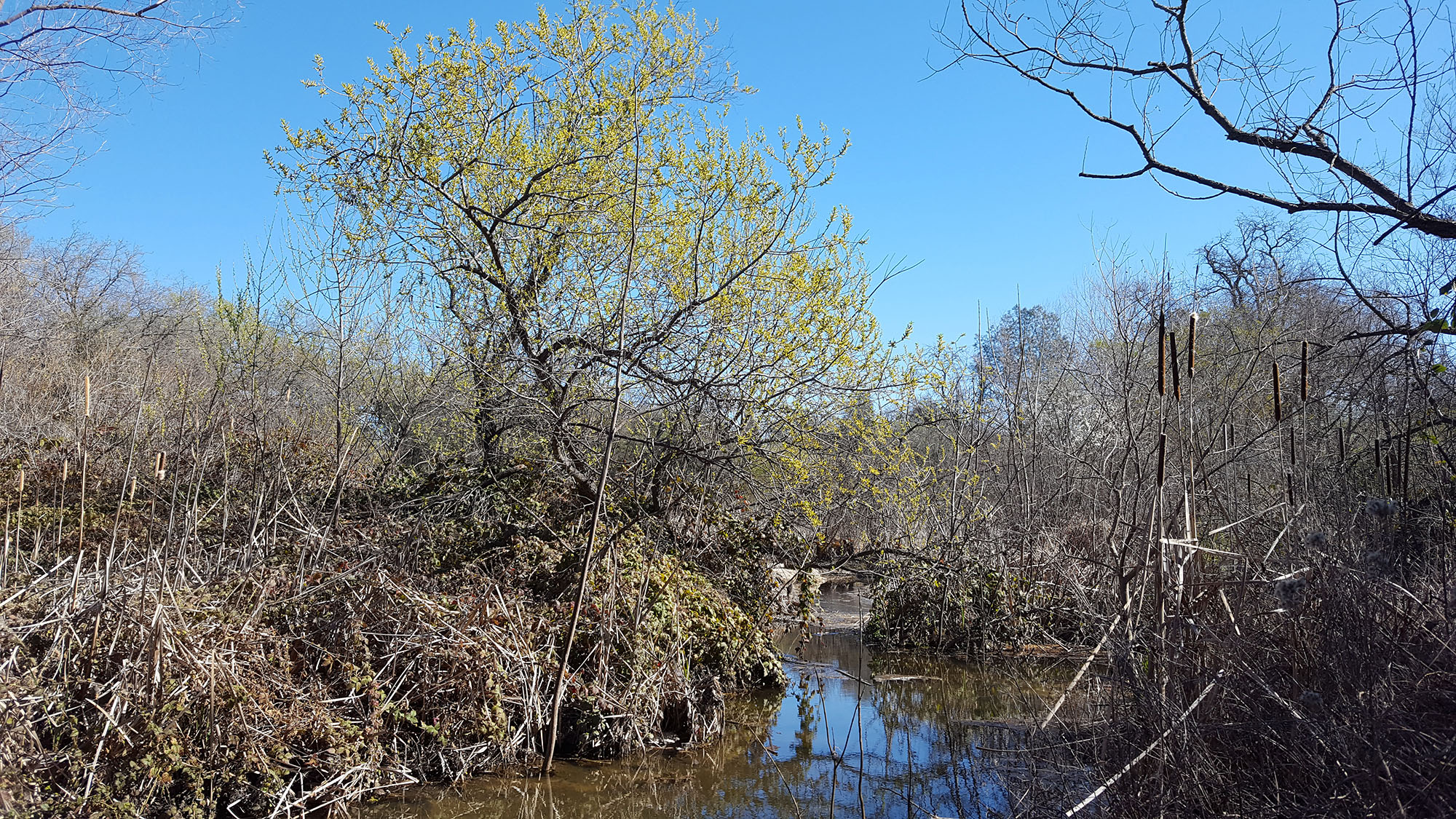
The table below lists some of the species of Willows that can be found in the Foothills region.
(Note – Traits can vary from what is listed. It can be difficult to ID Willows to the species, they require observing plant parts that are present at different seasons, & they also tend to hybridize.)
| SPECIES | Height | Leaf Character | Twigs | Catkins | Buds | Trunk |
|---|---|---|---|---|---|---|
| Arroyo Willow (Salix lasiolepis) | under 30 ft (a bit over 15 ft at maturity) | oblanceolate shape, upper surface shiny, leaf length is less than 10 times its width, leaf margins are wavy like bacon, | can have dense short hairs | catkins appear in winter before leaves emerge | rounded, yellow buds | Multi-trunked, Shrub-like |
| Black or Goodding’s Willow (Salix gooddingii) | over 30 ft at maturity | smooth on both sides (no waxy under surface) – only willow with this trait | yellow, yellow-green, tan | leaves emerge along with catkins around March, (later than Arroyo Willows) | Single trunk typically | |
| Narrow-leafed, Sandbar, or Coyote Willow (Salix exigua) | 6 to 15 ft | gray, hairy, no or short petioles, leaf margins generally smooth | brownish with hairs, hairs lost with age | catkins appear with or after leaves | forms dense thickets | |
| Red Willow (Salix laevigata) | over 30 ft at maturity | shiny top leaf surface, lower leaf surface waxy grayish | red to yellow-brown | Buds have prominent point | Single trunk typically | |
| Shining or Pacific Willow (Salix lasiandra) | up to 33 ft | glands on base of leaf | glossy, bright yellow | Single trunk typically | ||
References
1.) Trees and Shrubs of Nevada and Placer Counties, California | Redbud Chapter, California Native Plant Society. CNPS Press, 2014.
2.) “Arroyo Willow.” Nature Collective, https://thenaturecollective.org/plant-guide/details/arroyo-willow/. Retrieved 2/25/2022
3.) “Catkin.” Wikipedia, Wikimedia Foundation, 10 Feb. 2022, https://en.wikipedia.org/wiki/Catkin. Retrieved 2/25/2022.

